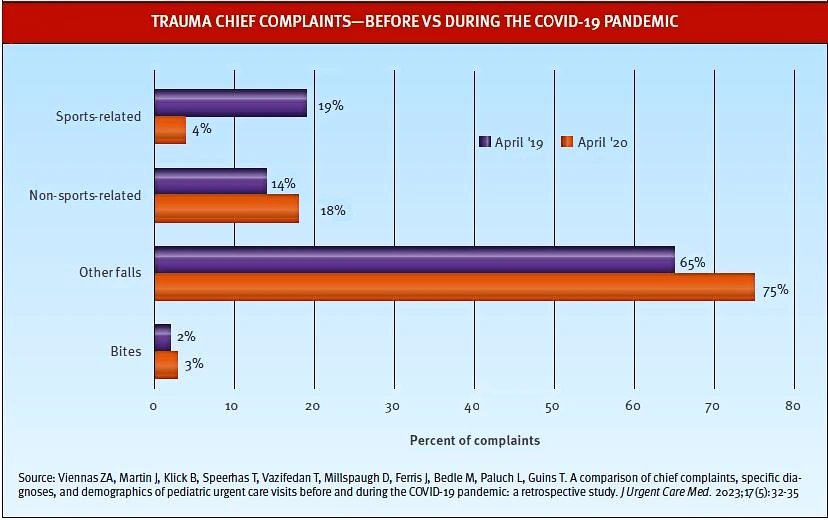The effects of SARS-CoV-2 itself on various populations in the United States and internationally have been well-documented. Likewise, an ever-growing number of studies have measured the effects of the pandemic on healthcare, the workforce, children’s education…and on and on.
One fact that has been largely overlooked: While social distancing and mask mandates helped reduce spread of COVID-19, with the unintended benefit of reducing the number of cases of other infectious diseases, they did nothing to prevent the “normal” mishaps of everyday life. People still go into car accidents, slipped and fell on the ice, and got food poisoning.
The same goes for children, who may have been prevented
from interacting at school or playing sports for a time but still had ample opportunity at home to injure themselves in any number of creative ways. And the effect that had on the nature of presentations to emergency rooms and urgent care centers is interesting, as noted in a study conducted by researchers at Children’s Hospital of the King’s Daughters in Virginia.
Sports injuries dropped, while traumas unrelated to sports as a percentage of all presentations increased nearly fivefold. Even bite injuries increased somewhat.
Check out the graph below (and read A Comparison of Chief Complaints, Specific Diagnoses, and Demographics of Pediatric Urgent Care Visits Before and During the COVID-19 Pandemic: A Retrospective Study) for more details.

